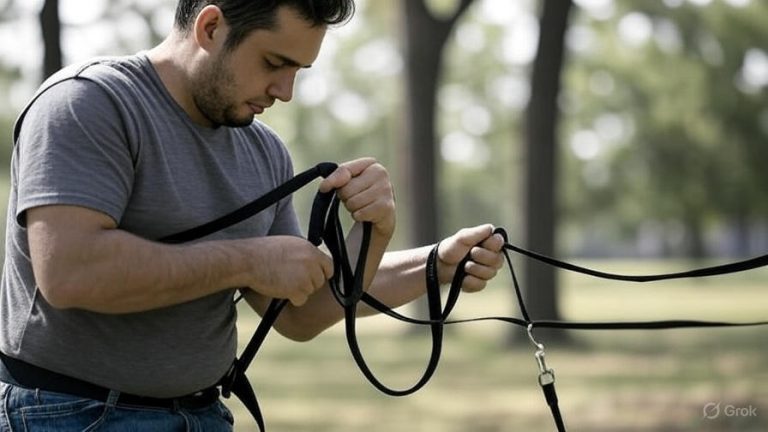How Can I Find My Dog?
Losing a beloved dog ranks among the most heart-wrenching experiences any pet owner can face. Your furry companion has vanished, and panic sets in as you wonder where they could be. The good news is that most lost dogs return home safely when owners take the right steps quickly. This comprehensive guide will walk you through proven strategies that help reunite countless families with their missing pets.
Act Fast – Time Is Critical
The first few hours after discovering your dog is missing are crucial. Lost dogs typically stay within a two-mile radius of their home during the initial 24 hours. However, this window narrows as time passes and your pet becomes more disoriented.
Start by searching your immediate neighborhood thoroughly. Dogs often hide in familiar spots close to home when they feel scared or confused. Check under porches, in garages, behind sheds, and in any other hiding places your dog might find comforting. Many dogs are found within just a few blocks of their home.
Call your dog’s name loudly and clearly while searching. Bring their favorite treats or shake their food bag – familiar sounds can draw them out of hiding. If your dog is shy or fearful, avoid chasing them if you spot them. Instead, sit down and call them calmly. Running after a scared dog often makes them flee further.
Create an Effective Search Strategy
Organize your search efforts systematically rather than wandering aimlessly. Divide your neighborhood into sections and assign different areas to family members or friends helping with the search. This approach ensures you cover more ground efficiently and prevents missing any potential hiding spots.
Search during dawn and dusk when dogs are most active. These twilight hours offer the best chances of spotting your pet as they move around looking for food or water. Dogs also tend to be more responsive to their owner’s voice during these quieter times of day.
Expand your search radius gradually. If you don’t find your dog within the immediate area after several hours, widen your search to include nearby parks, wooded areas, and neighborhoods. Dogs sometimes travel surprising distances, especially if they’re chasing something or running scared.
Harness the Power of Social Media
Social media platforms have revolutionized how we find lost pets. Facebook, Instagram, and Twitter allow you to reach thousands of people in your area within minutes. Post clear, recent photos of your dog along with detailed information about when and where they went missing.
Join local pet groups on Facebook specifically dedicated to lost and found animals in your area. These groups often have active members who share posts widely and keep an eye out for missing pets. Many cities have multiple groups, so join as many relevant ones as possible.
Create a compelling social media post that includes your dog’s name, breed, size, color, and any distinctive markings. Mention the specific location where they were last seen and include your contact information. Ask friends and family to share your post to increase its reach.
Use Nextdoor and Community Apps
Nextdoor, the neighborhood social networking app, proves invaluable for finding lost dogs. Your neighbors are most likely to spot your pet, and Nextdoor allows you to communicate directly with people in your immediate area. Post about your missing dog and ask neighbors to check their yards, garages, and any other spaces where a scared dog might hide.
Many communities also have dedicated apps or websites for lost and found pets. Research what platforms are popular in your area and post on all of them. Some cities have specialized pet recovery organizations with their own apps and notification systems.
Contact Local Animal Shelters and Rescue Groups
Every animal shelter and rescue organization in your area should know about your missing dog. Call them immediately and visit in person if possible. Many shelters receive dozens of animals daily, and staff might not immediately recognize your dog from a phone description alone.
Bring a recent photo of your dog and a detailed written description to leave with shelter staff. Visit shelters frequently – new animals arrive constantly, and your dog might be brought in at any time. Some shelters also allow you to post flyers on their bulletin boards.
Don’t limit yourself to just one shelter. Expand your search to include all animal control facilities, humane societies, and rescue groups within a 50-mile radius. Good Samaritans sometimes drive considerable distances to bring found dogs to shelters they’re familiar with.
Create Eye-Catching Lost Dog Flyers
Professional-looking flyers remain one of the most effective tools for finding lost dogs. Design flyers with a large, clear photo of your dog at the top. Use bold, readable fonts and include essential information like your dog’s name, breed, size, color, and your contact information.
Include the word “REWARD” prominently on your flyer, even if you haven’t decided on a specific amount. This single word dramatically increases the number of people who will read your flyer and actively look for your dog. Many successful pet recoveries involve reward-motivated individuals.
Post flyers strategically throughout your neighborhood and surrounding areas. Place them on telephone poles, community bulletin boards, veterinary offices, pet stores, and anywhere else pet owners might see them. Laminate your flyers or use plastic page protectors to keep them readable in wet weather.
Work with Veterinary Clinics
Veterinary clinics often serve as unofficial lost pet centers in their communities. People frequently bring injured or stray animals to the nearest vet clinic, making these locations crucial to your search efforts. Visit every veterinary clinic within a reasonable distance of where your dog went missing.
Leave a flyer with your contact information at each clinic and ask them to call you if any dog matching your pet’s description is brought in. Many veterinary staff are animal lovers who will genuinely want to help reunite you with your dog.
Some veterinary clinics also have microchip scanners and can check found dogs for identification chips. If your dog is micro chipped, make sure your contact information is current in the chip database.
Set Up Food and Water Stations
Hungry and thirsty dogs often return to familiar locations looking for food and water. Set up feeding stations near your home and any other places your dog frequents, such as favorite walking routes or dog parks. Use strong-smelling foods like wet dog food or treats to attract your dog from a distance.
Check these feeding stations regularly for signs that your dog has visited. Look for disturbed food bowls, paw prints, or any other evidence that your pet has been there. Some pet owners set up motion-activated cameras to monitor feeding stations when they can’t be there in person.
Place some of your worn clothing near the feeding stations. Your scent can help guide your dog home and provide comfort if they’re scared. Avoid leaving out excessive amounts of food that might attract other animals or create a mess.
Consider Professional Help
Pet detective services exist in many areas and can provide specialized expertise in finding lost dogs. These professionals understand animal behavior and have experience with search techniques that typical pet owners might not know about. They also often have access to specialized equipment like tracking dogs or thermal imaging cameras.
Professional pet trackers can be particularly valuable if your dog has been missing for several days or if initial search efforts haven’t been successful. They can analyze your dog’s behavior patterns and predict where they might go based on their personality and habits.
Don’t Give Up Hope
Many dogs are reunited with their families weeks or even months after going missing. Dogs have incredible survival instincts and can adapt to living outdoors longer than most people realize. Stories of dogs found after extended periods away from home happen regularly.
Continue your search efforts even if days pass without any leads. Keep your social media posts active, replace weather-damaged flyers, and maintain contact with local shelters and rescue groups. Persistence often makes the difference between success and failure in pet recovery efforts.
Prevention for the Future
Once you’ve reunited with your dog, take steps to prevent future incidents. Ensure your dog wears proper identification tags with current contact information. Consider having your dog microchipped if they aren’t already – this permanent identification can’t fall off or become unreadable.
Secure your yard with proper fencing and regularly inspect it for potential escape routes. Dogs are remarkably clever at finding ways out of seemingly secure areas. Fix any loose boards, fill gaps under fences, and make sure gates close securely.
Train your dog to come when called reliably. A strong recall command can prevent many lost dog situations by allowing you to call your pet back before they wander too far. Practice this command regularly in different environments to ensure your dog responds consistently.
Final Thoughts
Finding a lost dog requires a combination of immediate action, strategic thinking, and persistent effort. The key is to start your search quickly and use multiple approaches simultaneously. While the experience of losing a beloved pet is traumatic, remember that most dogs do make it home safely when owners take the right steps.
Stay positive and don’t give up. Your dog is likely out there somewhere, and with the right combination of search techniques, community support, and persistence, you can bring them home. Every day, families across the country are reunited with their missing pets thanks to these proven strategies.
The bond between you and your dog is strong, and that connection can help guide them back to you. Keep searching, keep hoping, and keep believing that you’ll see your furry friend again soon.







